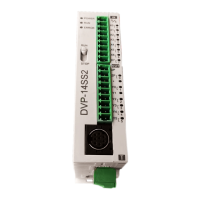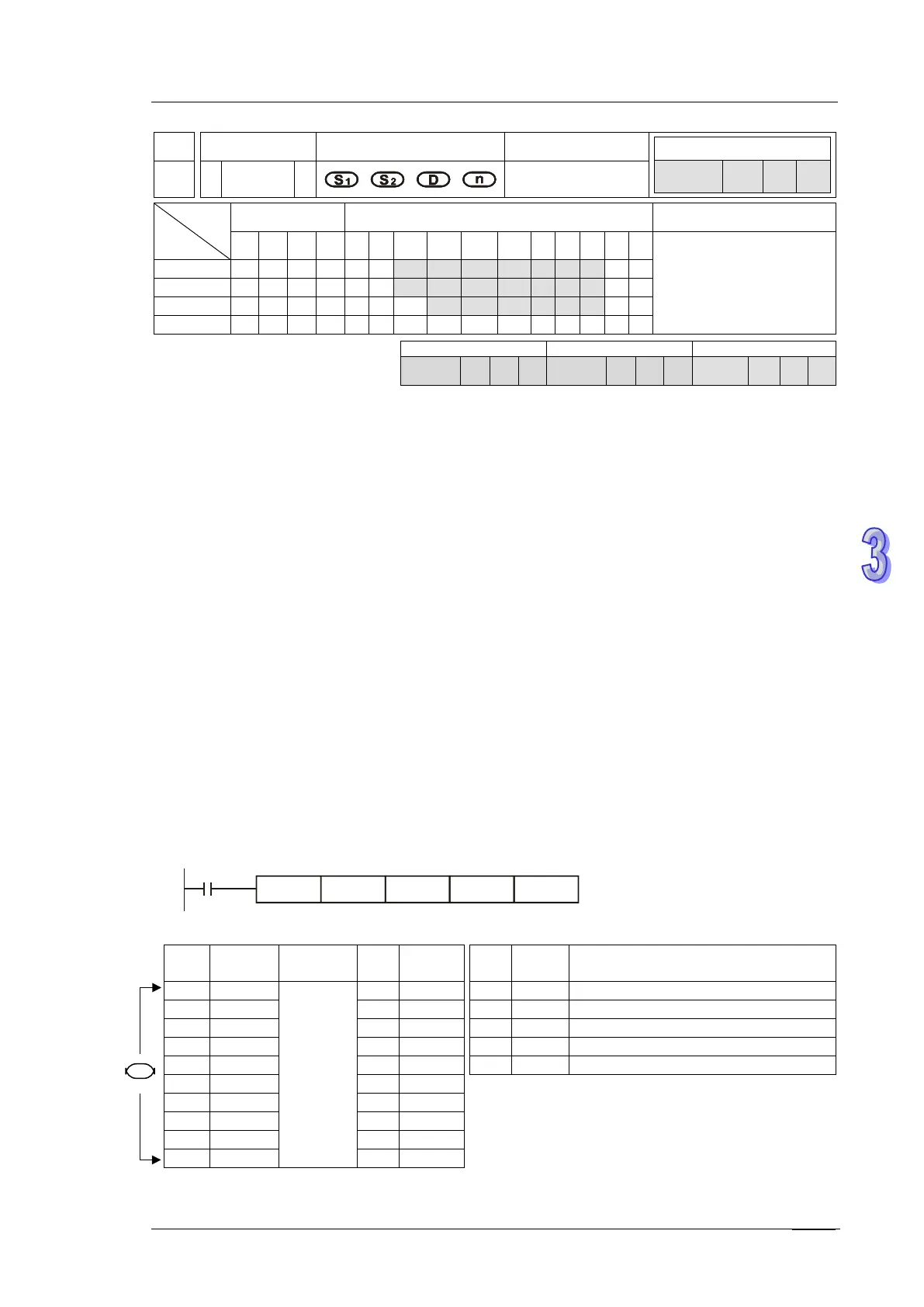3. Instruction Set
API
Mnemonic Operands Function
61 D
SER P
Type
OP
Bit Devices Word devices Program Steps
X Y M S K H KnX
KnY
KnM
KnS
T C D E F
SER, SERP: 9 steps
DSER, DSERP: 17 steps
SS2
SX2
SS2
SX2
SS2
SX2
Operands:
S
1
: Start device of data stack S
2
: Device to be searched D: Start device for storing search
result (occupies 5 consecutive devices) n: Stack length
Explanations:
1. SER instruction searches for the value stored in S
2
from the data stack starting with S
1
, with a
stack length n. The search results are stored in the 5 registers starting from D
2. D stores the total of the matched results; D+1 stores the No. of device storing the first matched
result; D+2 stores the No. of device storing the last matched result; D+3 stores the No. of device
storing the smallest value; D+4 stores the No. of device storing the biggest value.
3. If operand S
2
uses index F, only 16-bit instruction is available
4. If the instruction applied 32-bit instruction, operands S
1
, S
2
, D, n will specify 32-bit registers.
5. The range of operand n: n = 1~256 (16-bit instruction), n = 1~128 (32-bit instruction)
Program Example:
1. When X0 = ON, the data stack D10~D19 are compared with D0 and the result is stored in
D50~D54. If there is no matched result, the content of D50~D52 will all be 0.
2. D53 and D54 store the location of the smallest and biggest value. When there are more than
one smallest and biggest values, the devices with bigger No. will be recorded.
S
1
Content
Result
D
Explanation
S
2
D0=K100
The total data numbers of equal value
The number of the first equal value
The number of the last equal value
The number of the smallest value
The number of the largest value

